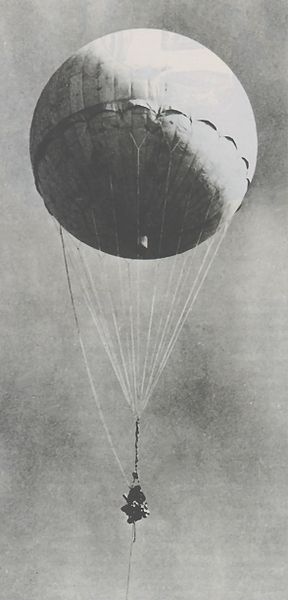Definition: “A projectile, formerly usually spherical, filled with a bursting charge and exploded by means of a fuze, by impact, or otherwise, now generally [sic] designed to be dropped from an aircraft.”
Etymology: Greek [βόμβος] bombos, a “deep and hollow sound,” more specifically an onomatopoetic expression similar to our ‘boom.’ Latinized to bombus, a “buzzing or booming sound,” and henceforth, carried into Italian, bomba, and then French, bombe (1588)–where it referred to mortar shells or cannon ordnance.
The Latin root of "explosion" refers to the act of booing an actor off stage.
English and Modern Origin: "Bomb" was first used in English, in its modern sense, as “an explosive device placed by hand or dropped from an airplane,” in 1909.
The Austrian Siege of Venice, 1849, saw the first documented use of ‘bombing,’ where balloons were sent over the city walls in hopes that they would pop and drop their payload onto the defenders below. Interestingly, this non-specified method of targeting could have resulted in the deaths of civilians and destruction of non-military targets (the balloons, unsurprisingly, resulted in very few casualties)–an issue to be discussed in greater detail throughout the project.
“One can become enthusiastic over anything. For a time I was delighted with bomb throwing. It gave me a tremendous pleasure to bomb those fellows from above.” – Manfred von Richthofen, The Red Baron.
 –A Japanese "fire balloon" from the Second World War.
–A Japanese "fire balloon" from the Second World War.
Image credit: http://www.overthinkingit.com/wp-content/uploads/2008/03/288px-japanese_fire_balloon_moffet.jpg
Back to the bomb main.
